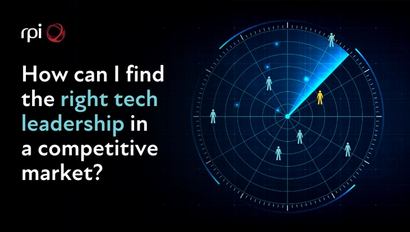Automation saves money, reduces fraud, prevents human error, and speeds up financial processes. With everything streamlined and efficient, it can look like there’s no real downside. In truth, there doesn’t have to be – as long as you remember that, at the end of every automated action, is a customer.
It may sound obvious, but in the race to automate everything, that simple fact seems to be too easily forgotten.
Automation can be alienating. It can be impersonal. Though when you get it right, it can offer an even better, more bespoke experience to every customer.
Here, we look at how you can ensure automation isn’t hurting your customer experience.
The direction of travel for banking and finance
In the old days, you might well have known your bank manager. They would know you, your family, and your profession. You’d have a customer relationship with them. You’d have regular conversations, they’d understand your circumstances, and they could offer advice that was particular to you. Sometimes, they’d exercise their discretion when it came to handling your account.
But bank branches are on the way out, with almost half having closed since 2015. People are increasingly opting for online banking. Around 20% of people haven’t gone to a bank branch since the pandemic, and 27% prioritise apps as the medium of interaction with their banks.
AI sees in an instant what you spend, where, and how frequently. It can respond to your behaviour, offer you information, direct you to services that might be useful, arrange products, and help you keep on top of your finances. It has the capability to offer a more tailored experience, offering solutions in real-time. For customers, it can be more practical, flexible and bespoke, which is why digital banking is now in such high demand, driving the need for ever evolving FinTech solutions.
Banks and financial organisations need to make sure that they are offering these digital experiences – but they also need to make sure that, in this digital world, they are still treating their customers as just that. Customers. Not just data points.
You can’t automate empathy
In many ways, the AI above sounds a lot like the bank manager, but with advantages of speed, efficiency, and scalability. But the real difference is that where AI has data, your bank manager had knowledge.
Data = information
Knowledge = information + understanding
We can’t replicate the bank manager digitally or at scale, but we can build understanding into the customer experience.
The starting point is to understand that as more processes and touchpoints are automated, the more they threaten the human-centricity of the experiences.
Guarding against that requires people who can see both sides of the coin. It requires commercial minds that appreciate the value of automation to the company’s bottom line, and what it can do for customers. It calls for humans who see automation as a tool, not an end in itself.
A new relationship
When automation does the heavy lifting for processes and financial decisions, it also has to govern the customer journey and interact with human beings. It’s crucial to design those automated pathways with people in mind.
You probably don’t have to think very hard to remember a time when you were looking for help, information, or advice from a company, and you found yourself stuck in a loop with a phoneline menu, or a chatbot, and you sighed, “I just want to speak to a person.”
That’s because we don’t make decisions with algorithms, and programmed logic doesn’t handle nuance very well.
It further illustrates the need for empathy. People’s money is a highly emotional topic. Customers need to feel cared for, and that’s difficult to achieve through the indifference of a program.
Already, less than a third of people feel that their bank will look after their financial wellbeing. The digital shift may make things quicker, easier, and more efficient, but it can’t replace relationships. This impersonal approach can erode trust over time unless it’s managed correctly.
The generational range of customers creates disparity in how individuals want and need to interact with a bank. There are digital natives, who may never have been to a bank branch, or seen something like a chequebook, and who perhaps seldom handle cash. There are older generations for whom the internet, if they use it, is an obstacle and not a tool. And, of course, there are those in between who value both the analogue and the digital world. The question for FinTech is, are you leaving anyone behind?
Accenture identified four types of banking customer personas:
- Pragmatists, who are relaxed about change
- Traditionalists, who distrust technology
- Pioneers, who are comfortable at the cutting edge
- Sceptics, who are wary and dissatisfied
With talent in your company that understands both automation and human behaviour, you’re well placed to offer an experience for every type. Your commercial leads strategise commercial outcomes, developers create platforms that are truly human-centric, and customer relations can provide support to users, while relaying real-world feedback about the experience.
No FinTech solution will please all of the people all the time, but with the right expertise in-house, you stand a far better chance of bridging any digital-human gaps, and pleasing most of the people most of the time.
The new face of banking
Ironically, the removal of humanity can provide the opportunity to express more character in customer-facing side of the business.
We alluded to human error earlier. Banking and finance are arenas where if you get something wrong, things can go very wrong. With all that responsibility, eccentricity is hardly appropriate or welcome, and you can’t be seen as frivolous while you’re handling people’s hard-earned money.
Automation gives a financial brand a certain licence for more personality without eroding any trust. The presence of AI and machine-driven processes offers the reassurance that the important stuff is taken care of. It’s not so vulnerable to human fallibility. If a bank doesn’t take itself too seriously, that’s not to say it isn’t taking its responsibilities seriously.
After all, the age of the challenger banks invites innovation. Their success proves that finance doesn’t have to be staid or stuffy to succeed.
Making the connections
The truth is it’s extremely hard to find and secure people who can bring something to table for both automation and customer experience. What excites one customer terrifies another, and the same is often true of talent.
You need tech experts who think ‘human-first’ when designing platforms, and commercial leads who also understand digital. Those are the people who can reach the four types of customer above. They’re very valuable, and very rare.
Combing the talent pool for those skills and the right experience is extremely difficult and time-consuming. And in the current candidate-driven market, securing their services is even harder. In that climate, expert assistance is vital.
RPI’s specialist recruiters deliver the human element of technological innovation. As consultative specialists with deep market knowledge, extensive relationships, and a deep candidate network, we drive transformation in some of the world’s biggest businesses.
To find out how RPI can source and secure the FinTech talent that you need, contact people@rpint.com.
![Automation is efficient, but it can alienate your users. Learn how FinTechs can make sure automation doesn’t hurt their customer experience.]](https://cdn.sanity.io/images/x2j6emyv/production/13ec0e100c7f2beef48aa8ac6b57bcd45e34ecd6-1200x680.jpg?w=1200&h=680&auto=format)


